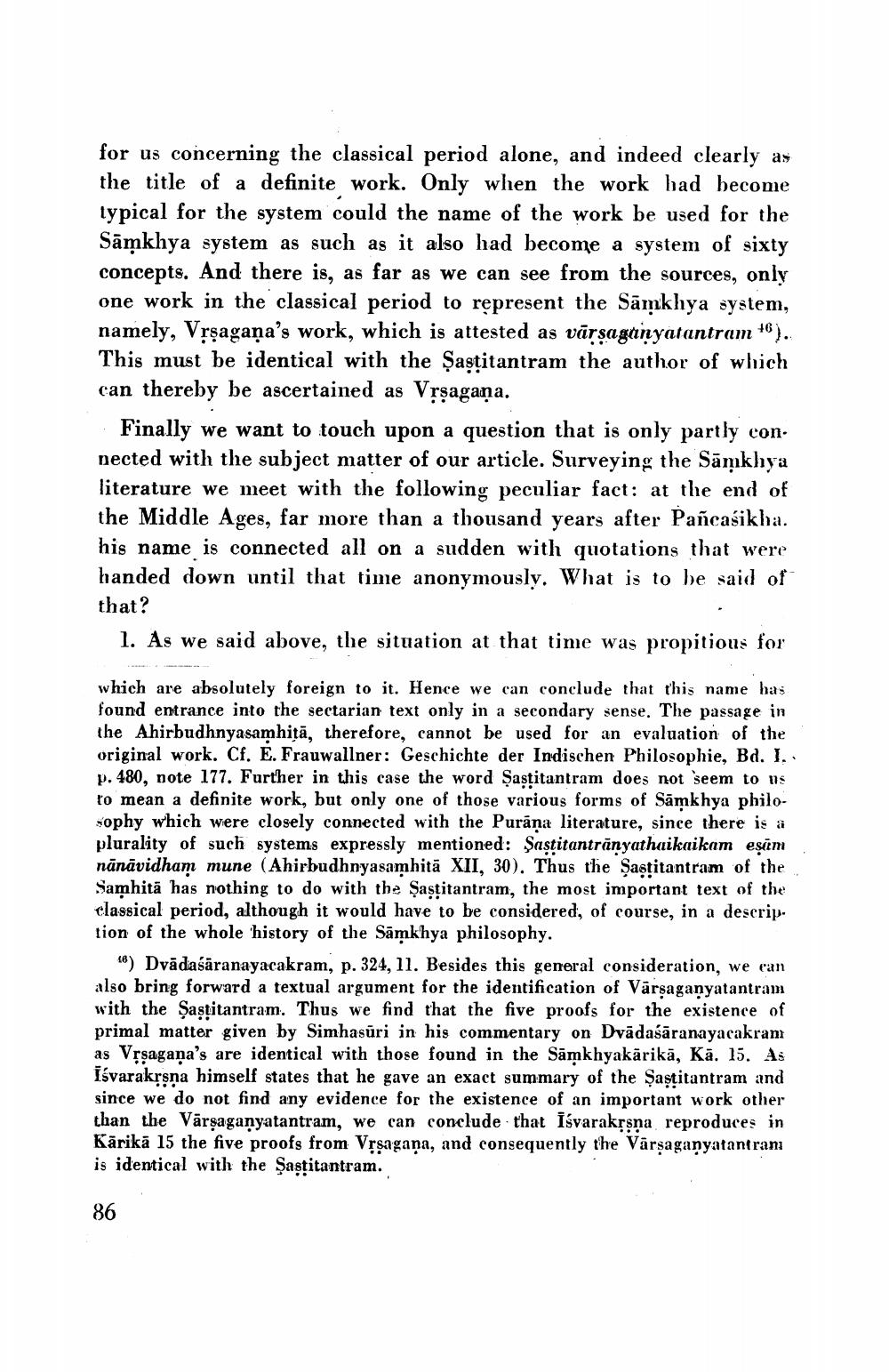________________
for us concerning the classical period alone, and indeed clearly as the title of a definite work. Only when the work bad become typical for the system could the name of the work be used for the Sāmkhya system as such as it also had become a system of sixty concepts. And there is, as far as we can see from the sources, only one work in the classical period to represent the Sāmkhya system, namely, Vrşagana's work, which is attested as vārsaganyatantram +6). This must be identical with the Şastitantram the author of which can thereby be ascertained as Vrsagana. · Finally we want to touch upon a question that is only partly con. nected with the subject matter of our article. Surveying the Sāmkhya literature we meet with the following peculiar fact: at the end of the Middle Ages, far more than a thousand years after Pancasikha. his name is connected all on a sudden with quotations that were handed down until that time anonymously. What is to be said of that?
1. As we said above, the situation at that time was propitious for
which are absolutely foreign to it. Hence we can conclude that this name has found entrance into the sectarian text only in a secondary sense. The passage in the Ahirbudhnyasamhițā, therefore, cannot be used for an evaluation of the original work. Cf. E. Frauwallner: Geschichte der Indischen Philosophie, Bd. l. p. 480, note 177. Further in this case the word Şastitantram does not seem to us to mean a definite work, but only one of those various forms of Sāmkhya philosophy which were closely connected with the Purana literature, since there is a plurality of such systems expressly mentioned: Şastitantrānyathaikaikam eşim nānāvidham mune (Ahirbudhnyasamhitā XII, 30). Thus the Şastitantram of the Samhitā has nothing to do with the Şastitantram, the most important text of the classical period, although it would have to be considered, of course, in a descrip. tion of the whole 'history of the Samkhya philosophy.
18) Dvadasāranayacakram, p. 324, 11. Besides this general consideration, we can also bring forward a textual argument for the identification of Vārsaganyatantram with the Şastitantram. Thus we find that the five proofs for the existence of primal matter given by Simhasūri in his commentary on Dvādaśāranayacakram as Vrsagana's are identical with those found in the Sāmkhyakärikā, Kā. 15. As Isvarakrsna himself states that he gave an exact summary of the Şaştitantram and since we do not find any evidence for the existence of an important work other than the Vārsaganyatantram, we can conclude that Isvarakrsna reproduces in Kārikā 15 the five proofs from Vrsagana, and consequently the Varsaganyatanıranı is identical with the Şastitantram.
86




